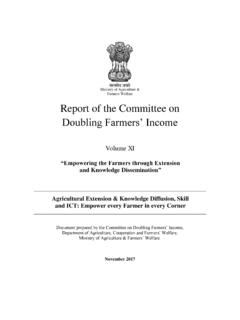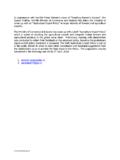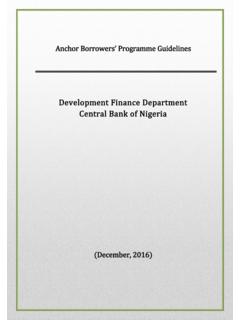Transcription of Nitrogen Source for Wheat; Urea vs. 28%UAN - …
1 Crop Advances: OMAFRA Field Crop Project Reports Nitrogen Source for wheat ; urea vs. 28%UAN (Interim Report) Purpose: There has been a noticeable increase in the number of growers utilizing 28% as the Nitrogen Source for the wheat crop. This is driven by both a continued frustration over achieving uniform spread patterns with urea , and an increased capability of growers to utilize their own sprayers to apply 28% thus reducing costs. The ability to apply 28% is further enhanced by new nozzle technology including streamer nozzles , which virtually eliminate any leaf burn potential previously associated with the use of 28%, and reduce drift potential to near zero. The use of satellite guidance systems has increased growers ability to make accurate applications regardless of the conditions. Unfortunately, 28% is a more expensive Nitrogen Source , and recent research from Dr. Ed Lentz, at Ohio State, indicated a yield advantage to urea over 28%.
2 However, Dr. Lentz s work used flood jet nozzles to apply the 28%, not the streamer nozzles being utilized in Ontario. This project was undertaken to evaluate any yield differences between the two Nitrogen sources under Ontario field conditions. The second year of a three year study is reported here. Methods: Farmer conducted field scale trials were initiated across Southwestern Ontario. Two replicate trials were encouraged, and 75% of the trials to date have been two replication tests. Applications of both the 28% and urea treatments delivered the same actual Nitrogen rate at whatever rate the grower normally applied. Applications of both products were made as close to each other as possible, often on the same day, and never more than two days apart. Results: With 19 locations summarized to date, there is a small but clear yield advantage to 28% Nitrogen . Table 1 shows a t/ha ( bu/ac) yield advantage, with the 28% winning in 80% of the tests.
3 There is no good scientific explanation for this result, other than spread pattern accuracy. While there was a slightly greater chance of urea volatilization due to dry weather in the spring of 2005, the results are actually closer in 2005, indicating that Nitrogen loss is unlikely to explain this result. Table 2 shows the economic impacts of the yield differences observed. Dollar figures were calculated using wheat at $ ($129/t), urea at $ N ($ ), and 28% at $ N ($ ). Nitrogen rate was calculated at 90 pounds actual N/acre (100 kg N/ha). These results show that despite the higher cost of 28%, there is still an $ advantage to 28% based on the increased yield. Many growers will add another $ to $ advantage for being able to do the application themselves, rather than having to hire a custom applicator. Whether this is a real advantage, or simply a perceived advantage, is definitely open to debate. 1 Crop Advances: OMAFRA Field Crop Project Reports Table 1.
4 wheat Yields by Nitrogen Source 28% urea % Wins Year Sites bu/ac t/ha bu/ac t/ha 2004 8 88 2005 11 73 Average 19 79 Table 2. Economics of Nitrogen Source Choices Economic analysis $/ac Year # of Sites 28% urea 2004 8 2005 11 Average 19 Summary: 28% applications on winter wheat have increased yields by an average of t/ha ( bu/ac) over two years at 19 locations. Despite the higher cost of Nitrogen as 28% compared to urea ($ vs. $ ), there is still an economic advantage to 28% of $ Next Steps: This project will be conducted for one more year. Further statistical analysis will be undertaken. Acknowledgements: Many thanks to all the co-operators that assisted in this project.
5 This project would not have been possible without financial support from the Ontario wheat Producers Marketing Board, and The Middlesex Soil and Crop Improvement Association. A huge thank-you to the students that worked on this project, and actually generated the data, along with Marian Desjardine from Middlesex Soil and Crop, who keeps the financial wheels turning. Project Contacts: Peter Johnson, OMAFRA, Stratford, 2








